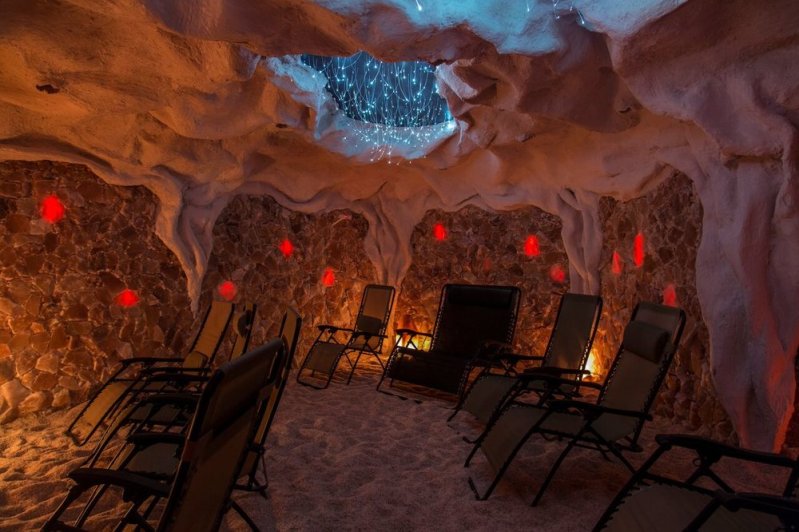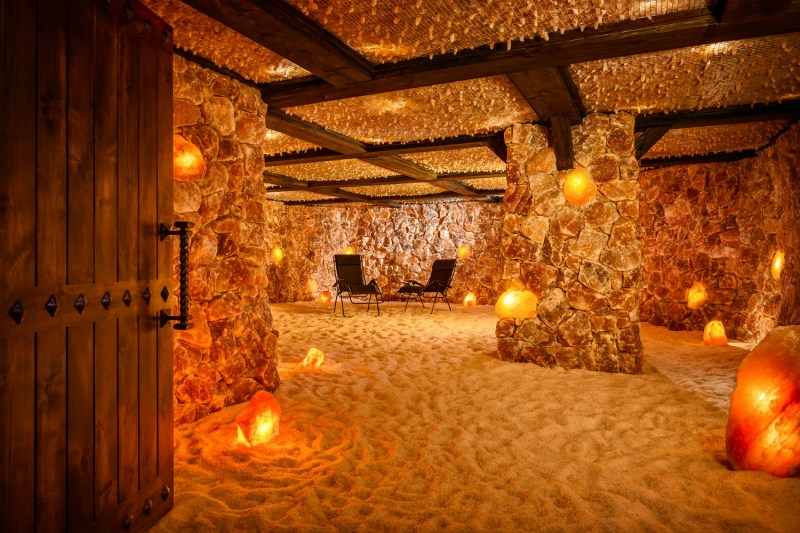Good looks, wellness, and relaxation seem to intersect in quite a few places. But one of the easiest ways to decompress, detoxify and soothe your skin has to be chilling in a salt cave. And it requires zero effort. There’s no poking, prodding, or deep tissue pain — just pure relaxation served with a side of medicinal benefits. Surely you’ve seen those Himalayan salt lamps? Just imagine what sitting in a dimly lit room with 14 tons of the stuff can do.
What the Heck is Halotherapy Anyway?
Superfine, vaporized salt (and a lot of it) is used to detoxify and energize your body. How? Pink salt from the Himalayan mountains is known to be particularly beneficial when it comes to respiratory and lung function. The superfine aerosol can reach deep into your bronchi to bust up and help you expel mucus and phlegm. Ew! Yep, it’s kind of gross when you think about it, but a big relief if you are suffering from allergies, a cold or sinus condition. And it allows you to take in more oxygen.

Shannon Coppola owner of Montauk Salt Cave originally discovered the benefits while in search of a remedy for her son’s severe sinus and respiratory ailments. After exhausting all other medicines including adenoid surgery, a salt room did the trick. She explains, “The salt is antiviral, antibacterial, antifungal, antimicrobial and anti-inflammatory.” But that’s not all a salt cave can do.
Salt Therapy Can Help Skin Ailments
How can a salt room improve upon your handsomeness? If you suffer from eczema, psoriasis or acne, you should try it. The salt contains soothing minerals like calcium, potassium, magnesium, sodium, iodine, bromine, copper, selenium and iron that can clear and improve your skin. And all you have to do is sit there and relax. No exfoliating, scrubbing, or creams required.

And then There’s the Stress Relief
Deeply inhaling and exhaling in a salt room helps your body release negative ions, which is said to reduce fatigue and tension.
Is this all sounding a bit too woo-woo for you?
One visit to the Salamander Spa’s Salt Suite at the Henderson Beach and Spa Resort in Destin, Florida will make you a believer. Their super luxe version of this trendy wellness therapy involves stepping into the calming, light pink glowing room of salt blocks while you sit back and chill to the low hum of the salt distribution.
And you don’t have to just sit there to reap the benefits. Salt rooms like Montauk Salt Cave and Salt Cave Santa Barbara offer yoga classes, meditation, Reiki healing, sound classes, and salt scrub treatments as well. It’s pure relaxation or relaxing purification depending on how you look at it
For other ways to relax, why not try something altogether different, like this insane muscle massager that will rattle your bones and relax your brain.


